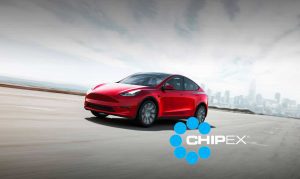Several trends are shaping the future of the new electric vehicles found worldwide in the 2020’s. As environmental sustainability drives more people and automobile manufacturers away from vehicles powered by fossil fuels, electric vehicles are seen as a viable alternative. Many fleet managers must now optimize their fleet operations to meet ISO 14001 defined sustainability targets. And a growing number of environmentally conscious private citizens are opting for electric vehicles because they don’t release toxic emissions that pollute the environment.

Popular Electric Vehicle Trends
1. Electric Powered Fleet Vehicles
Many companies are optimizing their fleet operations by integrating electric vehicles into their large fleets as part of their new corporate social responsibility programs. It helps make them good corporate citizens, earns the praise of environmental activists, and ultimately saves them money on fuel costs. It costs much less to power a fleet of vehicles with clean, low or no-emission electric motors than those using the internal combustion engines with high-emission diesel or gasoline. It can save large fleets millions annually.
2. Stricter Environmental Regulations
Over the next ten years, the U.S. Environmental Protection Agency, similar agencies in countries worldwide, and governments in North America, Europe, and Asia plan to enact and enforce stricter environmental regulations for automobile emissions. These new tougher regulations mean businesses must install emission-reducing technology in their vehicles and ensure a growing percentage of their commercial vehicles are run by electric power. Failure to meet those mandates will see those companies subject to significant fines.
3. Lower Battery Costs For Electric Vehicles
The price of batteries for electric vehicles will go down dramatically. Since 2010, the cost of the lithium-ion batteries used in electric vehicles has fallen substantially, and in 2021 and beyond, they will continue to do so. In 2010, the battery pack for an electric vehicle cost $1,160/kWh. By 2018, the average price was $176/kWh. Industry experts predict that by 2024 the price of battery packs will be around $94/kWh. By 2030 it could be as low as $62/kWh. Some say the by 2022, the price of electric engines and internal combustion engines will be about the same.
4. Improvements In Battery Technology
Several battery manufacturers have already made substantial advances in their battery chemistry. They have begun to move away from cobalt-dependent cathode chemistries and are moving toward nickel-based systems. A nickel-based cathode costs less than cobalt-based battery cells. Another benefit of nickel-based cathodes in a lithium-ion battery is their higher energy density and a longer life cycle than cobalt-based ones.
Governments have a vested interest in supporting the development of improved battery technology because it’s of strategic importance to their goal of facilitating the broader use of electric vehicles.
5. More Investment In Battery Development
The Vehicle Technologies Office of the U.S. Department of Energy and the new Batteries, Charging and Electric Vehicles Program and the Strategic Action Plan for Batteries of the European Commission is encouraging investment by and collaboration between national laboratories and private industry to fund research into improving the electric vehicle batteries as well as their drive systems. Large-scale investment in electric vehicle battery development is vital for increasing production capacity industry-wide. It will result in more robust, longer-lasting, more affordable batteries, lower electric vehicles prices, and make them a more viable option for the average person.
6. A Major Increase In Electric Powered Heavy Vehicles
Currently, two-wheelers and light-duty cars made up the majority of electric vehicles. But that trend is changing. There will be many more vans, busses, and light-duty trucks that are electric-powered in the next few years. This is due to a major series of advancements in battery chemistry, the tightening of emissions regulations, and more models of heavier electric vehicles becoming available. In 2018, there were 260 million electric two-wheelers and 5 million electric cars worldwide compared to 460,000 electric busses and only 250,000 light-duty commercial vans and trucks. Many industry experts predict electric vans and trucks will increase by 70% in the U.S. and 68% in Europe by 2025.
7. Increased Electric Vehicle Range
Since electric cars were invented in 1828, the range they could travel before they needed to be recharged hurt their sales. The distance the average electric vehicle can travel before recharging is about 200 miles. One of the most important new trends in electric vehicle production is increased range. Industry experts say new electric vehicles released in 2021 and 2022 will range from 275 to 300 or more miles. Plus,
Tesla already has electric cars with a range of as much as 400 miles. And the 2021 BMW i4 E.V. has a range of around 300 miles. Rivian says it will release a pickup truck that is all-electric and has a range of 400 miles. General Motors announced it would soon be releasing an electric vehicle with a range of 450 miles.
8. Here Comes The Medium And Heavy-Duty Electric Commercial Trucks
Several major truck manufacturers have said they will launch lines of electric-powered medium and heavy-duty trucks. Pure-electric vehicle manufacturers Tesla and Thor Trucks announced their plans to introduce trucks powered by electricity. Experts say these will be the perfect urban delivery and port duty trucks. In cities where air pollution restrictions stop gasoline and diesel-powered trucks from entering, electric trucks with low air and noise pollution would be welcome. Low and zero-emission trucks are expected to proliferate throughout Europe and the U.S. in the coming decade.
9. City Access Restrictions
A growing number of cities worldwide are restricting access by vehicles powered by gas or diesel. So far, 20 major cities have banned or said they would ban vehicles powered by gasoline or diesel from entering in or before 2030. That means only electric vehicles will be allowed to enter those cities. Starting in 2022, Copenhagen will implement a staggered ban preventing diesel cars from coming in. Paris will no longer let gasoline or diesel-powered vehicles enter the city center starting in 2030. In Central London’s Ultra Low Emission Zone, they charge a daily fee for particular petrol and diesel-powered vehicles to enter. By 2025, it will have zero-emission zones. In Beijing, 60% of the automobiles allowed in must be electrically powered.
10. Increased Capacity And Availability Of Charging Stations
Without access to an extensive, comprehensive national network of public charging stations, many people won’t buy an electric vehicle for fear it can run out of power, and they won’t be able to recharge their vehicle. Electric vehicle makers and governments worldwide recognize this and are working to increase capacity and build out the global charging station infrastructure to facilitate the huge number of electric vehicles they want to see on the roads. It also includes ultra-fast and wireless charging. Plans are afoot to build charging infrastructure in 100 of the most populous metropolitan areas in the United States by 2025.
Tesla and other companies are also helping build the charging stations needed for both private and commercial vehicles. California plans to build 250,000 charging stations by 2025. Europe’s Alternative Fuels Infrastructure Directive calls for member countries to have as a goal one charging station for every ten electric vehicles beginning now. Currently, China has more charging points than any other nation in the world. The U.S. has the second most, followed by the Netherlands, Japan, and Germany. Countries worldwide have committed to installing more charging stations to support electric vehicle use.
10 Must-Know Statistics
- California, New Jersey and New York together are investing $1.3 billion in charging infrastructure. In total, by 2027 the United States will invest almost $3.5 billion in charging stations.
- Tesla accounts for 50% of the electric vehicles sold in the United States.
- About 16% of the 70,000 electric vehicle charging stations in the United States are fast-charging D.C. types.
- Fast-charging mega-chargers are essential for facilitating the growth in the use of commercial electric vans, busses, and medium-duty and heavy-duty freight trucks.
- Experts predict that by 2040 56% of the light commercial vehicles and 31% of all the medium commercial vehicles will be electric vehicles.
- Research shows the worldwide electric bus market is anticipated to grow by 28% each year. By 2040, electric busses will make up about 70% of the worldwide bus fleet.
- By 2040, California and New York City want to have 100% zero-emission bus fleets.
- Automotive industry experts estimate that by 2024, 10% of all the vehicles sold will be electric-powered automobiles.
- The goal of British Columbia and Quebec is that by 2040 100% of cars sold in those two Canadian provinces will be electric vehicles.
- Experts say, by 2030, 48% of vehicles sold in China, 42% of vehicles sold in Europe, and 27% of the vehicles sold in the United States will be powered by electricity.
Search your car brand
brands

Can’t find your color code? enter your details manually here


















































































